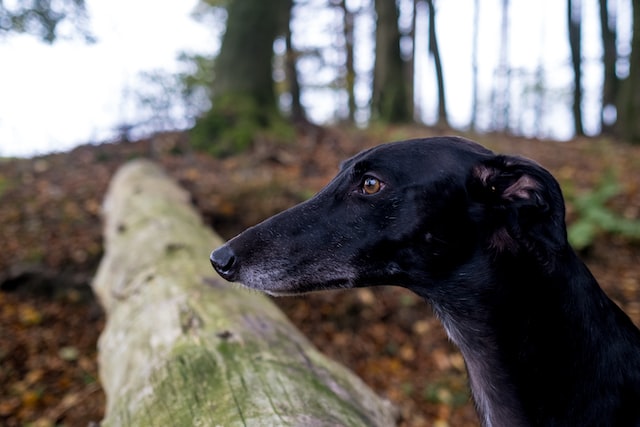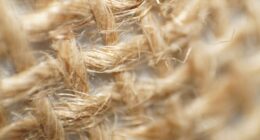Greyhounds are larger than whippets, and they have longer legs. Whippets also have a finer coat of fur than greyhounds. Greyhounds are bred for racing, while whippets are not. This means that greyhounds are more athletic and have more energy than whippets. Greyhounds can also reach higher speeds when running. Both greyhounds and whippets make good pets. They are both gentle and affectionate breeds of dog. However, because of their size difference, greyhounds may not be suitable for homes with small children or other pets. Whippets, on the other hand, do well in households with children and other animals.
What is a Greyhound?
(Photo by Brian Taylor on Unsplash )

Although both Greyhounds and Whippets are slender, elegant dogs that share many physical characteristics, there are some important differences between the two breeds. For example, Greyhounds are generally taller and heavier than Whippets. They also have longer legs in proportion to their body size, and their head is usually larger and more regal-looking than a Whippet’s. Additionally, Greyhounds typically have a short, coarse coat while Whippets usually have a finer, softer coat. Finally, one of the most noticeable differences between these two breeds is that Greyhounds have a “double suspension gallop,” meaning that they can reach top speeds very quickly; whereas, Whippets are not quite as fast as theirGreyhound cousins.
What is a Whippet?
(Photo By andy carter on Flickr)

Whippets are sleek and elegant dogs that resemble miniature greyhounds. These athletic dogs were originally bred to hunt small game, and they excel in lure coursing and racing. Today, they are popular companions and family pets. Whippets are gentle, loving, and intelligent dogs that bond closely with their owners. They are relatively easy to train and make excellent family pets.
History of the Greyhound and Whippet
The term “greyhound” is generally used to describe all dogs of the sighthound family, which includes breeds like the Afghan hound, Whippet, and Italian Greyhound. The word “greyhound” is thought to come from the Old English grighund. “Hund” means “dog” in German, and “grig” was used to describe a hunting dog.
Dogs in the sighthound family are built for speed. They have long legs and lean bodies, and can reach speeds of up to 45 miles per hour. Sighthounds were originally bred for hunting game like rabbits and hares. These days, they are mostly kept as pets or used in racing.
The first recorded greyhound race took place in England in 1776. In America, greyhound racing became popular in the 1920s. It is now illegal in 41 states.
Whippets were originally bred from Greyhounds in England in the 1800s. They were smaller than Greyhounds and were used for hunting rabbits and rats. Nowadays, Whippets are kept as pets or used in racing.
Differences between Greyhounds and Whippets
- The average weight of a greyhound is about 65-70 pounds, while the average weight of a whippet is about 25-45 pounds.
- Greyhounds are taller than whippets, with an average height of 30 inches, while whippets are only about 18-22 inches tall.
- Greyhounds have longer legs than whippets in proportion to their body size. Whippets also have narrower chests than greyhounds.
- While both breeds are slim, greyhounds are more muscular than whippets. Whippets have finer bones than greyhounds.
- Greyhounds can be any color, but most are some shade of fawn or brindle, with white markings. Whippets are usually black, blue, liver or fawn with white markings.
History and Origin of Greyhounds and Whippets
Greyhounds are one of the oldest dog breeds, originating in ancient Egypt where they were used for hunting and guarding. Greyhounds were also used for coursing and racing, and were later bred in England for these activities.
Whippets, on the other hand, were bred in England for hunting small game such as hares and rabbits. They were developed by crossing Greyhounds with smaller breeds, and were also used for racing.
Physical Characteristics of Greyhounds and Whippets
Greyhounds are larger in size than Whippets, typically weighing between 60 and 70 pounds, and standing 26 to 30 inches tall at the shoulder. They have a muscular build, long legs, and a deep chest.
Whippets are much smaller, weighing between 25 and 45 pounds, and standing 20 to 22 inches tall at the shoulder. They have a lean and athletic build, with short fur and long legs.
Temperament and Personality of Greyhounds and Whippets
Greyhounds are known for their friendly and affectionate personalities, and are often referred to as “40-mph couch potatoes”. They are generally good with children and other pets, and make great family dogs.
Whippets are also known for their affectionate personalities, but they can be more reserved with strangers. They are intelligent and trainable, and are great companions for active families.
Exercise and Activity Requirements of Greyhounds and Whippets
Both Greyhounds and Whippets have high energy levels and need plenty of exercise to keep them healthy and happy. Greyhounds are sprinters and enjoy running and playing, but they also need plenty of rest.
Whippets are also energetic, but they tend to be more relaxed and enjoy a more moderate level of exercise. They love to run, but they also enjoy being lazy and snuggling on the couch.
Grooming and Care Requirements of Greyhounds and Whippets
Greyhounds have short, smooth coats that require minimal grooming, and they are relatively low maintenance in terms of grooming. They are also relatively low shedding, making them a good choice for people with allergies.
Whippets have short, smooth coats that are easy to care for, and they are also low shedding. They do not require a lot of grooming, but they may need regular brushing to keep their coats looking shiny and healthy.
Health Concerns of Greyhounds and Whippets
Both Greyhounds and Whippets are generally healthy breeds, but they can be prone to certain health issues. Greyhounds are prone to hip dysplasia, heart issues, and eye problems. Whippets can be prone to heart issues and skin allergies.
What two dogs make a Whippet?
Two dogs of any breed can make a Whippet, though the most common pairing is between a greyhound and a terrier. The resulting dog is lean and athletic, with a sleek coat and long legs. Whippets are intelligent and obedient, making them excellent pets. They are also one of the fastest breeds of dogs, able to reach speeds of up to 35 miles per hour.
Which is better Italian greyhound or Whippet?
There are a few key differences between Italian greyhounds and whippets. For one, Italian greyhounds are significantly smaller than whippets. They typically weigh between 6 and 10 pounds, while whippets can weigh up to 60 pounds. Additionally, Italian greyhounds have a more slender build, with longer legs in proportion to their body. Whippets, on the other hand, are stockier and have shorter legs.
Another key difference is in temperament. Italian greyhounds are generally more reserved and shy around strangers, while whippets tend to be friendly and outgoing. Italian greyhounds also tend to be more independent, while whippets enjoy close companionship and being part of a pack.
So which is better? It really depends on what you’re looking for in a dog. If you want a small, delicate-looking dog with a calm temperament, an Italian greyhound may be the best choice for you. But if you’re looking for a larger dog that’s friendly and outgoing, then a whippet may be a better fit.
Can Whippets be left alone all day?
When it comes to leaving a whippet home alone, it really depends on the individual dog. Some whippets can be left home alone for 8 hours with no problem, while others may become anxious and destructive if left alone for too long. It’s important to get to know your own dog and see how they react to being left alone before making the decision to leave them unsupervised for an extended period of time.
Which is easy to maintain greyhound or a whippet?
There are a few things to consider when trying to answer this question, including coat care, energy level, and size.
Starting with coat care, both greyhounds and whippets have short coats that are easy to maintain. You won’t need to spend a lot of time brushing or bathing either type of dog. However, because whippets are smaller, they may be easier to groom overall.
When it comes to energy level, greyhounds are notoriously laid back. They are content to lounge around the house all day (which some people might find boring). Whippets, on the other hand, have a bit more energy. They still make great couch potatoes, but they also enjoy going for walks and playing fetch.
Finally, size is something you’ll want to take into consideration. Greyhounds are much larger dogs, standing at about 30 inches tall at the shoulder. Whippets only reach about 20 inches at the shoulder. This can affect everything from how much food they eat to how much space they need in your home (and car!).
So which is easier to maintain – a greyhound or a whippet? It really depends on what you’re looking for in a dog. If you want a low-maintenance pet that doesn’t require a lot of exercise, then a greyhound might be the right choice for you. If you’re looking for a slightly livelier dog that is still relatively easy
Can a Whippet beat a greyhound?
First, let’s look at the size difference between these two types of dogs. A whippet is much smaller than a greyhound – usually about half the size. This can give the whippet an advantage in speed and agility. Second, we need to consider the temperament of each dog. Whippets are typically very calm and gentle, while greyhounds can be more high-strung and excitable. This can make a big difference in how each dog responds to training and competition. Finally, we need to look at the experience level of each dog. If both dogs have had extensive racing experience, then the greyhound may have a slight edge due to its size and strength. However, if the whippet has had more experience or is simply a better racer, then it could easily beat a greyhound in a race.
What’s faster a Whippet or Greyhound?
There are a few things to consider when trying to determine which breed is faster. First, we must consider what type of speed each dog is built for. Second, we must look at the difference in leg length between the two breeds. And lastly, we must compare the two breeds side-by-side.
So, what type of speed is each dog built for? A whippet is built for short bursts of speed, while a greyhound is built for sustained speed over long distances. This means that a whippet will likely be faster over a shorter distance, while a greyhound will be able to maintain its speed for longer periods of time.
When it comes to leg length, there is about a 4 inch difference between the two breeds. This may not seem like much, but it can make a big difference in their stride and how fast they can run.
Now let’s compare the two breeds side-by-side. When looking at them head-to-head, it’s easy to see that a whippet has a more compact body than a greyhound. They also have shorter legs in proportion to their body size. Both of these factors give them an advantage when it comes to short bursts of speed. However, their smaller size also means that they can’t sustain their speed as long as a greyhound can. When comparing the two breeds side-by-side, it’s clear that a greyhound is the better choice for
Why do Whippets hide their nose?
Whippets do not generally hide their noses, but they may tuck their noses into their chest when they feel anxious or frightened. This behavior is a natural instinct for many dogs and is a way for them to protect their vital organs and face from potential harm. Some dogs may also tuck their noses in response to discomfort or when they are experiencing pain.
Many people think that greyhounds are gentle, quiet dogs because they are often used in racing. However, like any other dog, a greyhound can become aggressive if it is not properly trained and socialized. If you are thinking about getting a greyhound, it is important to do your research and make sure that you are prepared to handle an energetic and potentially aggressive dog.
Are Italian Greyhounds good beginner dogs?
Italian Greyhounds make wonderful beginner dogs! They are small, gentle, and quiet. They are also very loving and devoted to their families. Italian Greyhounds do not require a lot of exercise, so they are perfect for people who do not have a lot of time to commit to walking or running with their dog. However, because they are small dogs, they may be more prone to injury if they are not properly exercised.
What are the advantages and disadvantages of having a greyhound?
Advantages of owning a Greyhound:
- Affectionate and loyal companions: Greyhounds are known for their affectionate and loyal nature, making them great family pets.
- Low exercise requirements: Greyhounds are sprinters, not runners, and can get their exercise in short bursts. They are also well suited for apartment living and don’t need a lot of space.
- Intelligent: Greyhounds are smart dogs and can be trained easily.
- Good with children: Greyhounds are gentle dogs that are typically good with children.
Disadvantages of owning a Greyhound:
- Sensitive: Greyhounds have sensitive personalities and can be easily stressed or frightened by loud noises, unfamiliar people or animals.
- Health problems: Greyhounds are prone to certain health issues such as hip dysplasia, bloat, and eye problems.
- Need for socialization: Greyhounds may have a tendency to be shy and require consistent socialization and training.
- Cost: Greyhounds can be expensive to care for due to their health problems and special dietary needs.
As with any breed, it’s important to research and understand the breed before making a decision to adopt or purchase a Greyhound.
What are the advantages and disadvantages of having a Whippet?
Advantages of owning a Whippet:
- Affectionate: Whippets are known for their affectionate and friendly nature and are typically great with families and children.
- Low exercise requirements: Whippets are sprinters and don’t require a lot of exercise, making them suitable for apartment living or small yards.
- Intelligent: Whippets are intelligent dogs and can be trained easily.
- Low grooming needs: Whippets have a short, smooth coat that is easy to groom and maintain.
Disadvantages of owning a Whippet:
- Sensitive: Whippets can be sensitive dogs and may be easily stressed or frightened by unfamiliar people or animals.
- Health problems: Whippets can be prone to certain health issues such as eye problems, hip dysplasia, and skin allergies.
- Need for socialization: Whippets may have a tendency to be shy and may require consistent socialization and training.
- Prey drive: Whippets have a strong prey drive and may be inclined to chase small animals, which can lead to them running off or getting into dangerous situations.
As with any breed, it’s important to research and understand the breed before making a decision to adopt or purchase a Whippet.
Featured Image By – Photo by Filipp Romanovski on Unsplash








